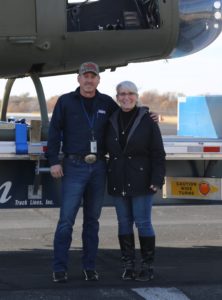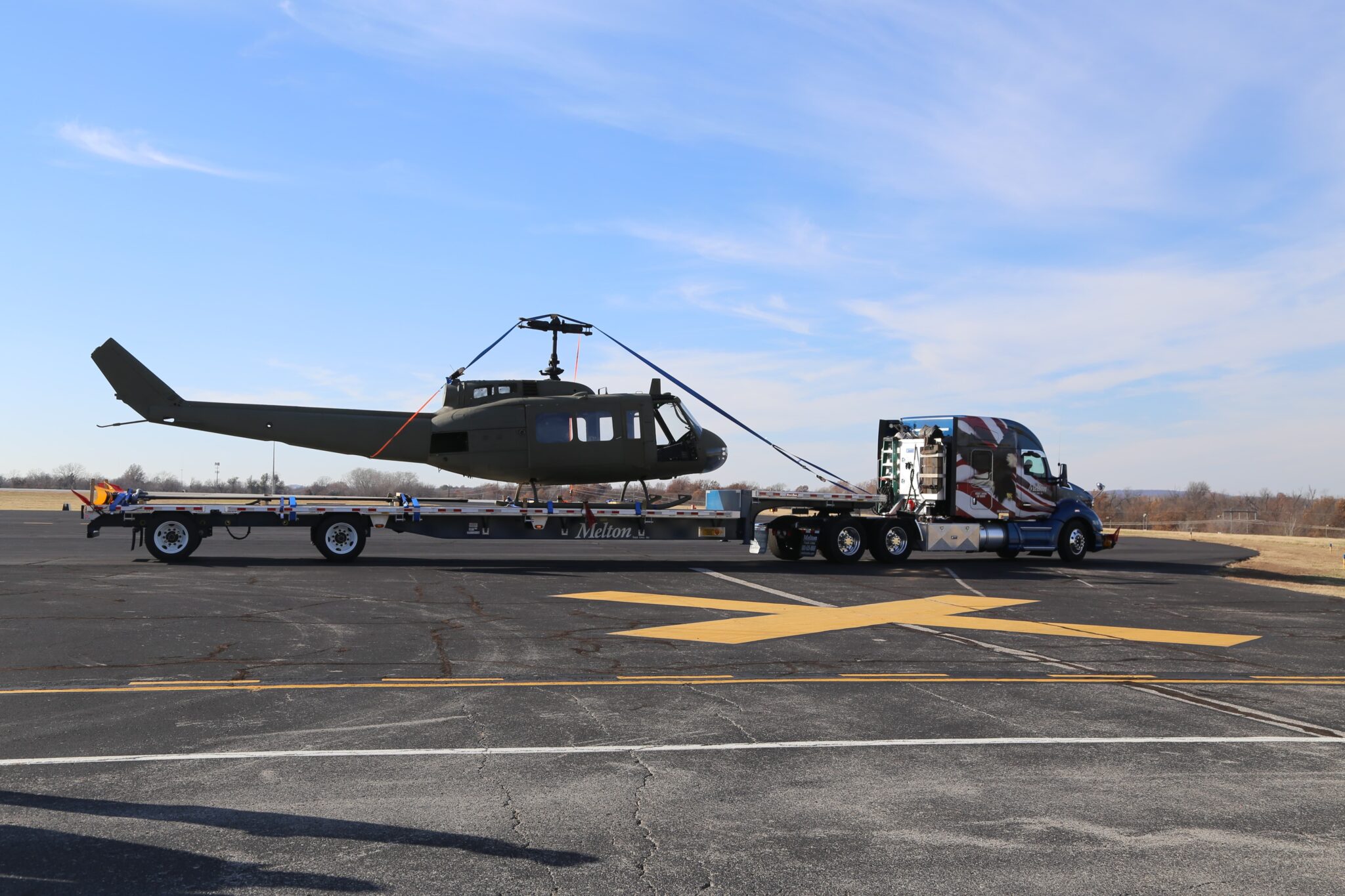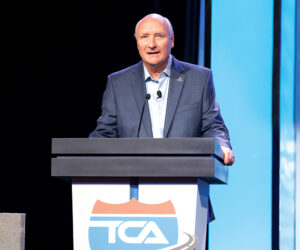TULSA, Okla. — The phone rings at the Melton Truck Lines office in Tulsa.
“Good morning. Melton Truck Lines. You say some manufactured steel to ship? No problem.”
It rings again.
“Good morning. Melton Truck Lines. You say you have some metal building components you need to transport? No problem.”
It rings a third time.
“Good morning, Melton Truck Lines. You say you have some HVAC equipment to ship? No problem.”
It rings yet a fourth time.
“Good morning, Melton Truck Lines. You say need to transport a Huey helicopter from Bristow to Tulsa? No problem.”
“That’s not our everyday move,” Russ Elliott, Melton’s executive vice president and chief operating officer said as he talked with a reporter for The Trucker recently about a call from the Tulsa Air and Space Museum and Planetarium. “We could have moved it clear across the country, but it only had to come from Bristow, which is about 40 miles southwest of Tulsa. It wasn’t a long move, but an important one.”
The chopper Melton moved to Tulsa was actually a replacement.
Elliott said several years ago the museum acquired a Huey from somewhere in Arkansas and had it restored.
But the rotor blades got stuck in a bridge while being moved to downtown Tulsa for a Veteran’s Day parade, yanking the chopper off the trailer and destroying it.
Melton had worked with the museum in the past, including transporting a disassembled DC-3 on three trailers from Michigan to Tulsa.
The DC-3 is a fixed-wing propeller-driven airliner that revolutionized air transport in the 1930s and 1940s. It has a cruise speed of 207 mph, capacity of 21 to 32 passengers and a range of 1,500 miles.

So when the museum called Melton, which has established a very positive relationship with Tulsa and the surrounding area, asking for assistance with the Huey, “we didn’t bat an eye. We said, ‘sure, we’ll pick it up and then bring it on in here.’ And then I went down to our safety department and said, ‘alright, go figure out how to get a helicopter on one of our step-deck trailers and get us safely here.’”
Fortunately, the helicopter was not heavy.
“It didn’t weigh a lot, but it is as wide and maybe even just an inch or two wider than our trailer width,” Elliott said. “We used a 53-foot, step-deck trailer, which some people would refer to as a single drop. And even at that it was a little over 12 feet tall.”
To make sure there would be no problems along the route from Bristow to Tulsa, Melton hired a pole car to run the route several weeks before the actual move just to make sure the truck and trailer wouldn’t have any trouble on bridges or with low-hanging wires.
Then, the carrier repeated the exercise on December 5, the day of the move.
Melton’s safety department actually went to Bristow on the day of the move, supervised the loading of the chopper and assisted the driver.
“First, they removed the rotor blades because the rotor blades on a helicopter are very flexible,” Elliott said. “They left the mast and just strapped it down by the landing gear.”
The Melton safety group then strapped down the chopper by securing the landing gear to the trailer.
“It certainly wasn’t one of those deals where we just turned a driver loose and said, ‘hey, go pick this helicopter up, bring it all up here,’” Elliott said. “We have several folks in our safety department that I consider to be genius experts when it comes to figuring out how to strap things down.”
The driver in this case was Michael Maines, an eight-year Air Force veteran who’s been with Melton four years.
The significance of transporting a Huey was not lost on Melton’s leadership, which chose the carrier’s Military Pride tractor to pull the trailer.
Huey is the nickname for the Bell UH-1 Iroquois, a utility military helicopter developed by Bell Helicopter to meet the United States Army’s 1952 requirement for a medical evacuation and utility helicopter, that first flew in 1956.
The Huey first saw service in combat operations during the Vietnam War with around 7,000 helicopters deployed.
“We have five trucks that we call our military trucks,” Elliott said. “They’re wrapped with an eagle and veterans drive those trucks. It meant a lot to Michael to be driving that day.”
Just as it meant a lot to the Tulsa Air and Space Museum and Planetarium to have another Huey to display.
Lyndon Finney’s publishing career spans over 55 years beginning with a reporter position with the Southwest Times Record in Fort Smith, Arkansas, in 1965. Since then he’s been a newspaper editor at the Southwest Times Record, served five years as assistant managing editor of the Arkansas Democrat-Gazette in Little Rock and from November 2004 through December 2019 served as editor of The Trucker. Between newspaper jobs he spent 14 years as director of communications at Baptist Health, Arkansas’ largest healthcare system. In addition to his publishing career he served for 46 years as organist at Little Rock’s largest Baptist church.








